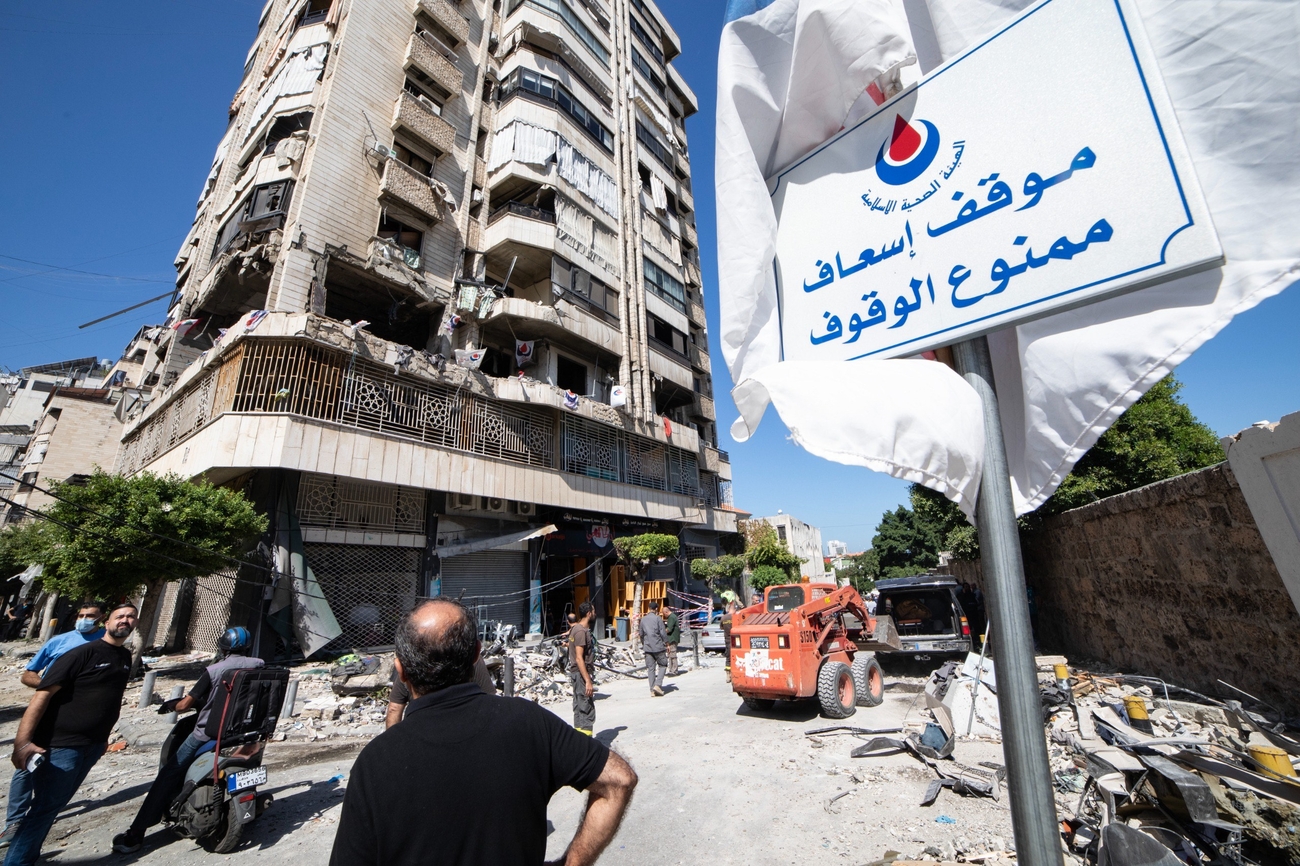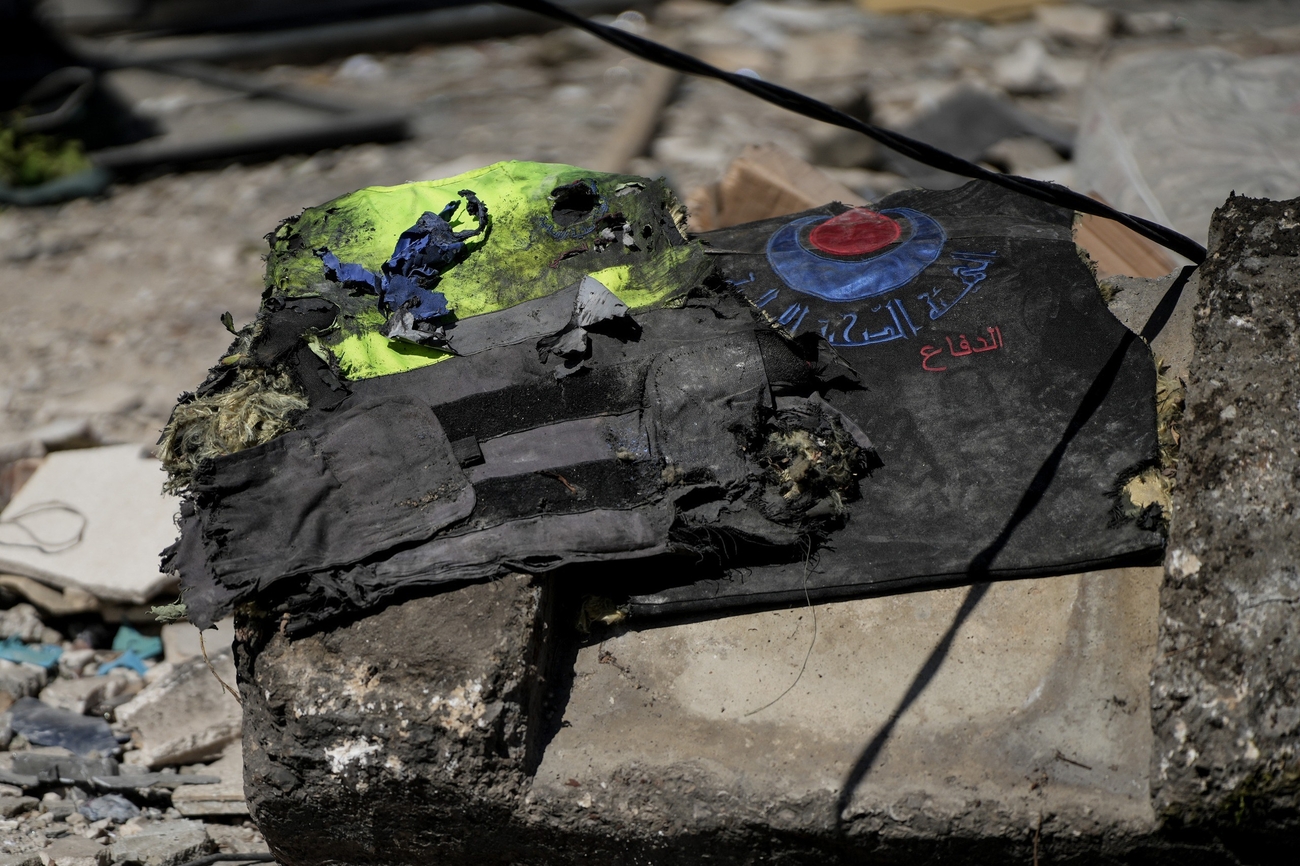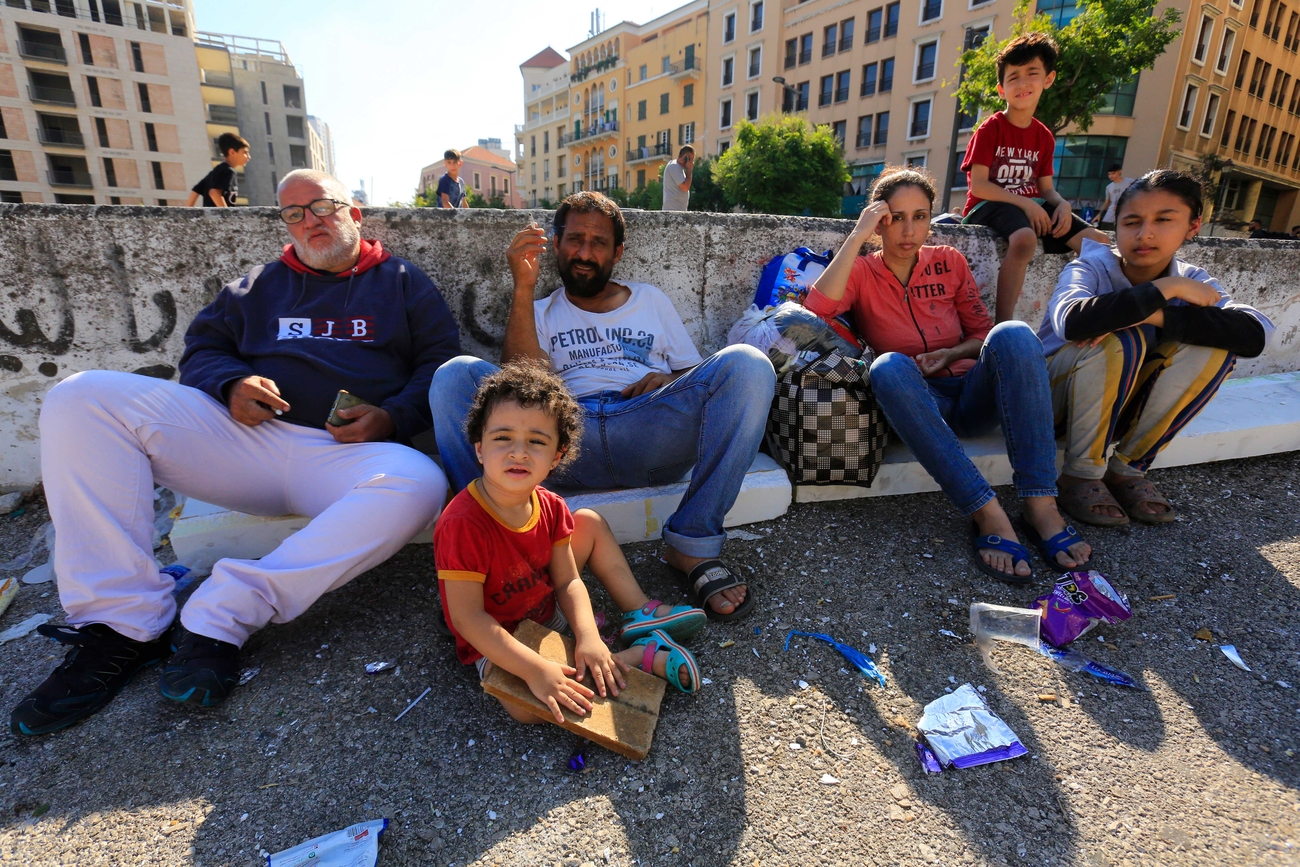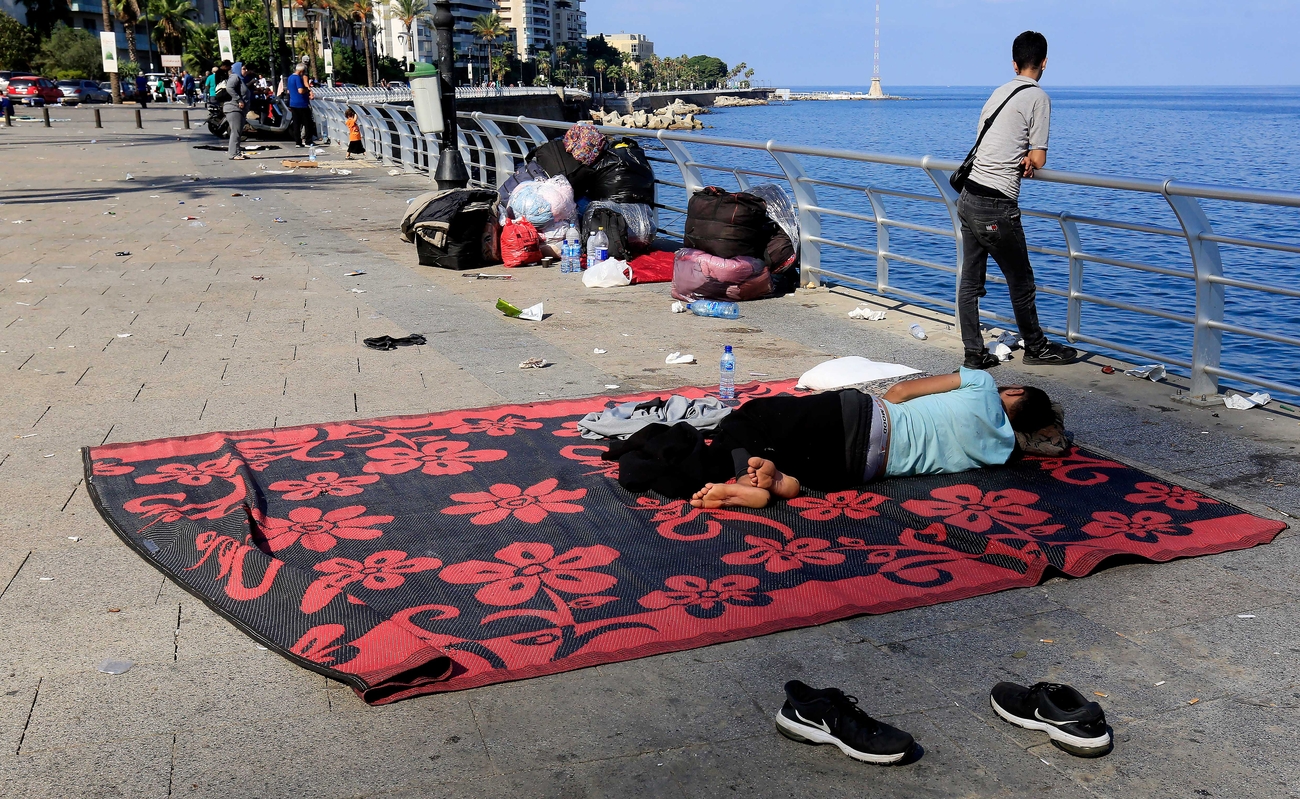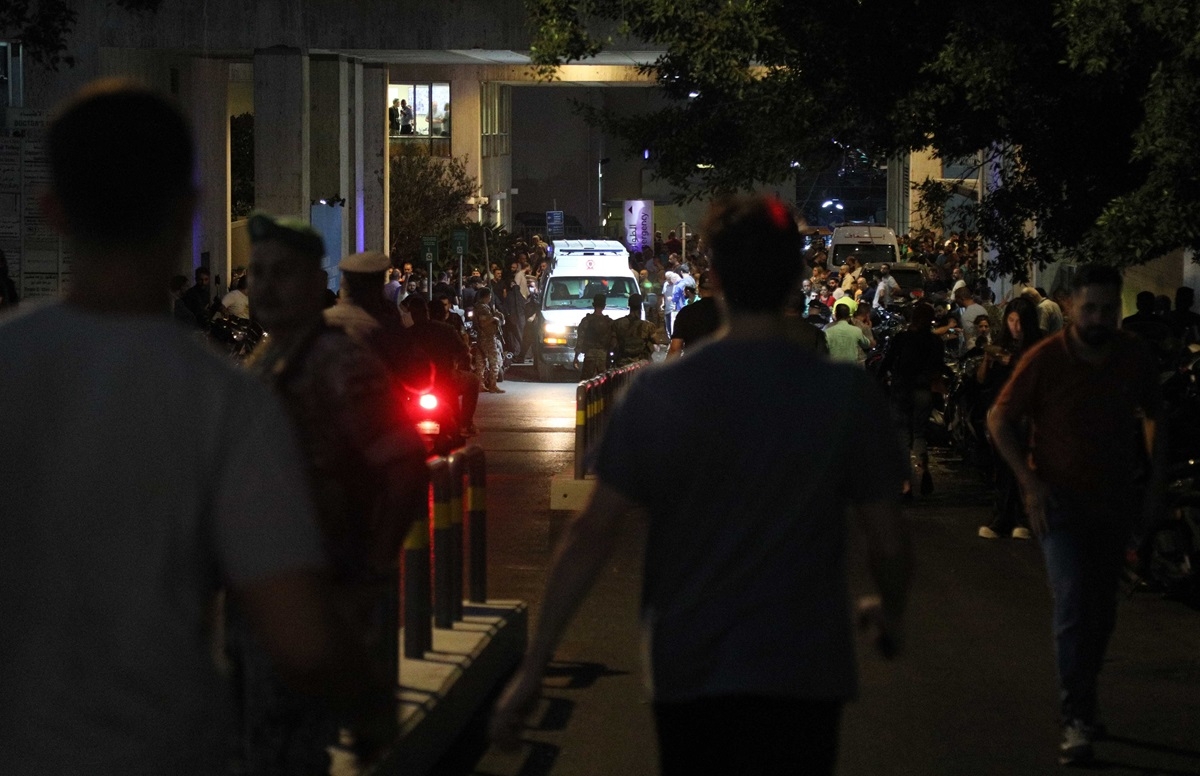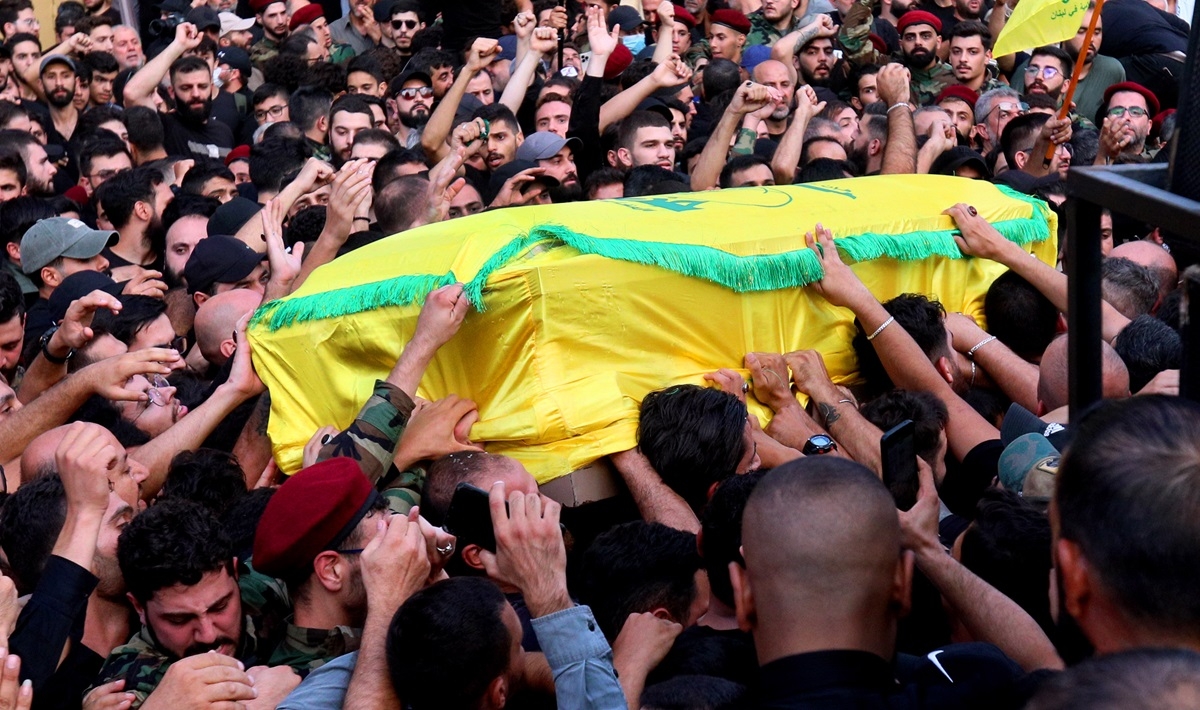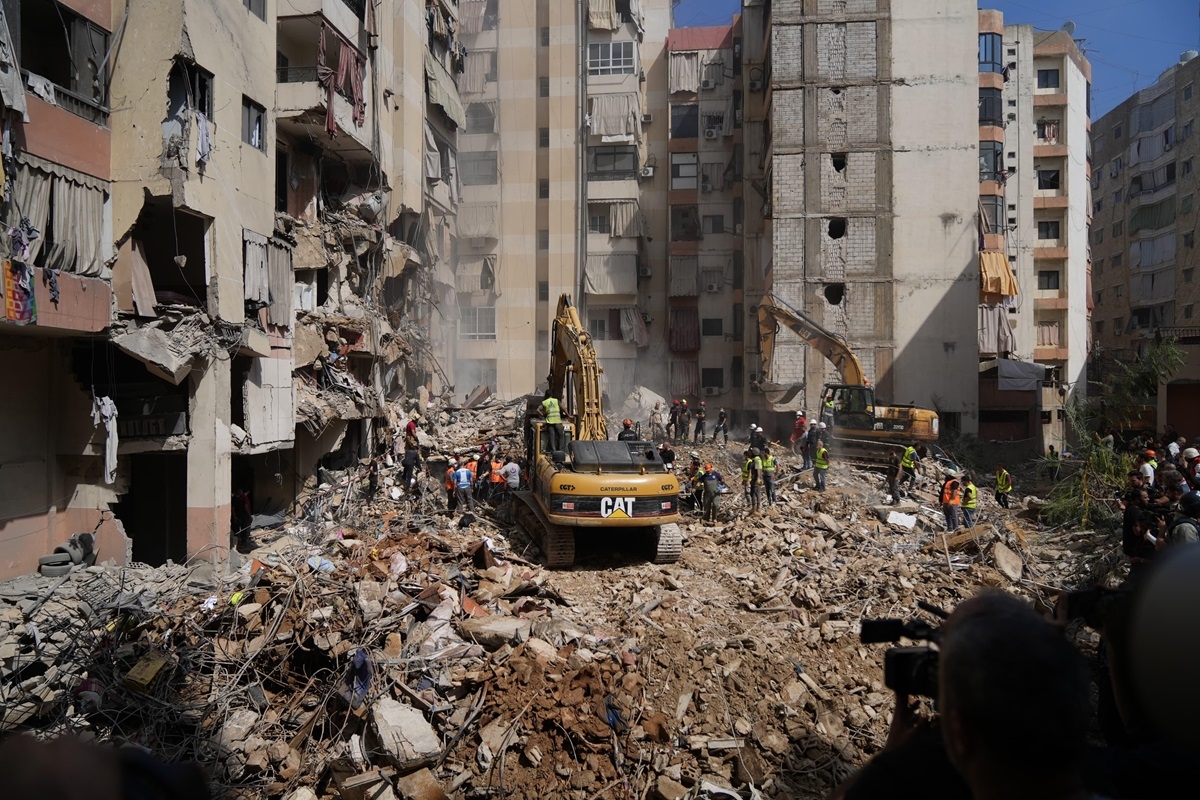Dispatches From the Lebanese Front
Editor's Note: This page was created to follow the rapidly escalating Israeli war on Lebanon. For our ongoing in-depth work, read our Special Issue On Palestine and South Lebanon, featuring new articles and select features from our archive.
October 3, 2024 Israel Targets Healthcare Workers in Central Beirut for First Time Bachoura, Beirut
Shortly after midnight on October 3, 2024, Israel struck the center of the capital for the first time in nearly a year of war. The strike targeted an office of the Islamic Health Authority — a civil defense and paramedic service affiliated with Hezbollah. As of 12:40 pm Thursday, the strike has killed 9 people and injured 14 others, according to the Public Health Ministry. DNA testing is being conducted on remains found at the site and further deaths may be announced. The Islamic Health Authority has announced the names of seven people, all healthcare workers or volunteer paramedics, who were killed in the strike, including its Beirut chief Raja Zreik. Attacks on healthcare workers are illegal under international law, regardless of political affiliation. The strike, next to a cemetery and a school and just a stone's throw from the Prime Minister's Office, endangered thousands of other civilians, including nearly 3,000 people sheltering in the Azarieh Center a half a kilometer away.
October 2, 2024 Israel Destroys Entire Residential Complexes in Beirut Suburbs Dahieh
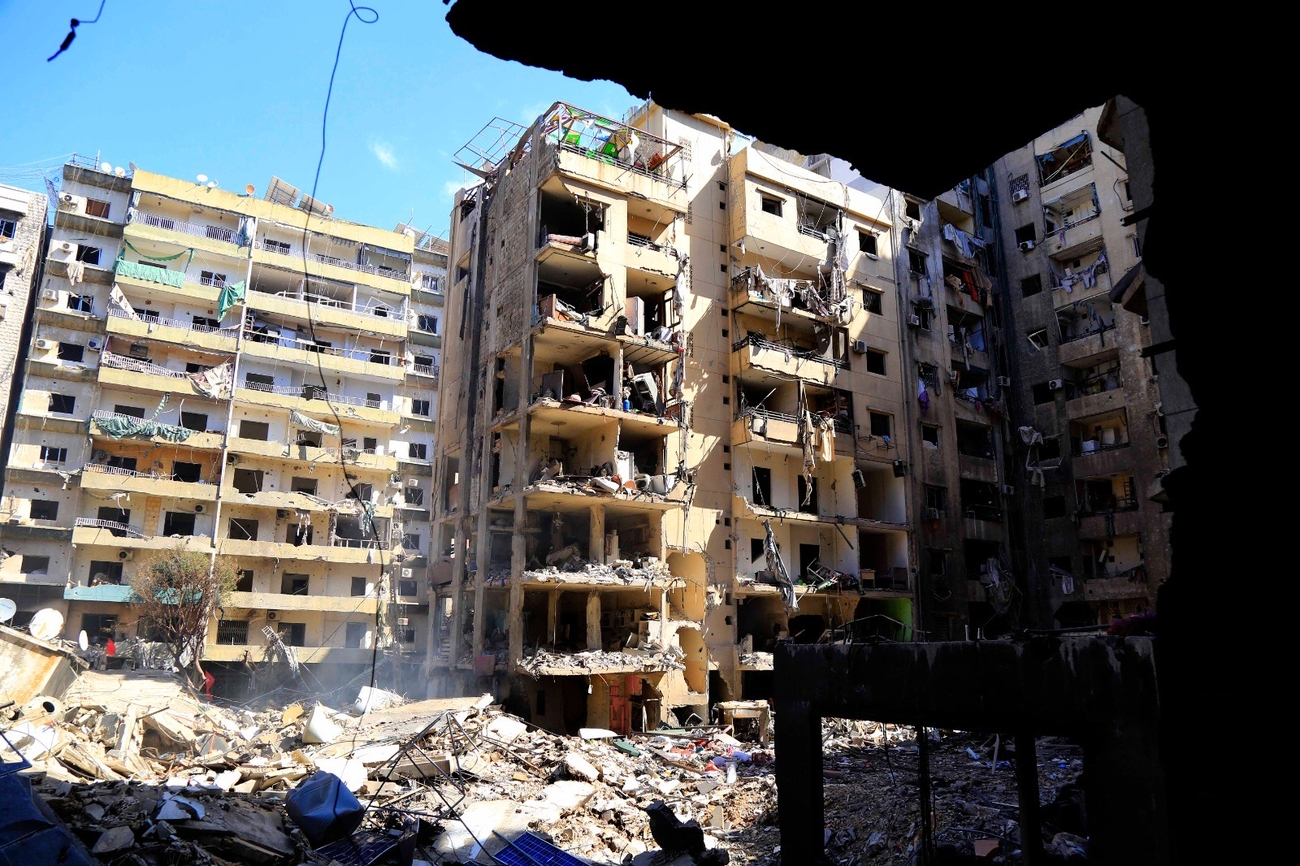
Amid the continuous Israeli bombardment of Lebanon, Dahieh has suffered widespread destruction to its dense urban fabric, where hundreds of thousands of people live, work, eat, and sleep. On Wednesday, October 2, 2024, Hezbollah invited the media to examine the aftermath of recent Israeli strikes, as many of the affected sites had previously been difficult to access. The Public Source saw entire building complexes reduced to rubble by Israeli missiles, which Israel claims – implausibly – were targeted strikes on Hezbollah’s military infrastructure. In October 2008, Israel officially outlined what is now known as the “Dahieh Doctrine,” a tactic developed during its 2006 war on Lebanon. The doctrine involves the large-scale destruction of civilian infrastructure in neighborhoods that support the resistance, with the aim of forcing the population into submission. While Israel asserts that this strategy is intended to degrade Hezbollah’s capabilities, its implementation primarily affects key civilian infrastructure and is a violation of international law.
View more images in this photo blog by Marwan Bou Haidar.
September 30, 2024 “The Path of Revolution in Lebanon is Our Universe” Beirut
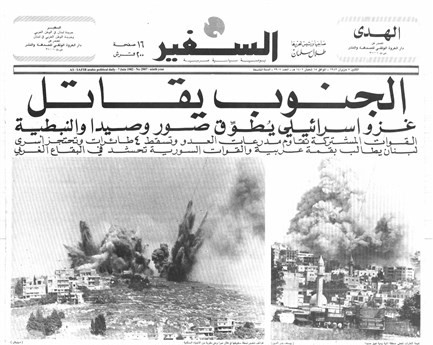
Front page of Assafir, that reads: “The South Fights: Israeli Invasion Encircles Sour, Saida, and Nabatieh”. 1982. (Photo credit: Assafir)
In June 1982, Israel invaded Lebanon and occupied south Lebanon. After 18 years of brutal occupation, Israel suffered a historic defeat, the first in the Zionist entity’s history, and was forced to withdraw, humiliated. Six years later, in July 2006, Israel waged another war against Lebanon. For 33 days, it sought to occupy parts of South Lebanon — and for 33 days, it failed. Despite repeated attempts to re-establish its control over the land, Israel was once again forced to retreat, suffering the second defeat in its entire history, both times on the same stubborn soil of south Lebanon.
Over the past month, Israeli officials have repeatedly expressed their intention to reoccupy south Lebanon. For us, the future seems to be uncertain and indeed much of it is. One thing is certain, however — they will be defeated. Forty-two years ago, in a roundtable journal organized by al-Tariq magazine, Hassan Hamdan, known as Mahdi Amel — a Marxist philosopher and militant from south Lebanon — warned against acquiescence and pessimism of the intellect and will. With unwavering intellectual clarity, even amid war, and unyielding political militancy, even in seemingly desperate times, Amel articulated the guiding principle that continues to shape Lebanon’s present and future as a bastion of resistance — a node that both haunts and breaks Israel.
Ahmad Elamine, a Lebanese-British doctor working in Psychiatry in London, translates Mahdi Amel’s “The Path of Revolution in Lebanon is Our Universe” (al-Tariq, 1982).
September 28, 2024 Israel Displaces Over a Million Residents, Many of Whom Are on the Streets as the Official Emergency Response Flounders Martyrs' Square / Corniche, Beirut
Thousands of displaced families seek refuge along the Corniche of Beirut and in Martyrs’ Square on Saturday, September 28. Lebanon’s Minister of Industry George Bouchikian estimates that an additional half a million people fled Dahieh over the weekend, after Israel repeatedly bombed different neighborhoods in the southern suburbs from Friday at noon until Saturday at dawn. The government estimates the total number of displaced around the country at over one million. Thousands, if not more, are left on the street as designated shelters are too sparse for the growing scale of the displacement. The government’s response has been wildly inadequate. Most shelters are severely under-equipped, with mattresses few and far between, and food, water, and medicine in short supply. Over 100,000 people have left Lebanon for Syria amid ongoing Israeli bombardment, according to the head of the UN refugee agency, UNHCR.
September 26, 2024 “We Drank Resilience From the Waters of the South” Batloun, Chouf
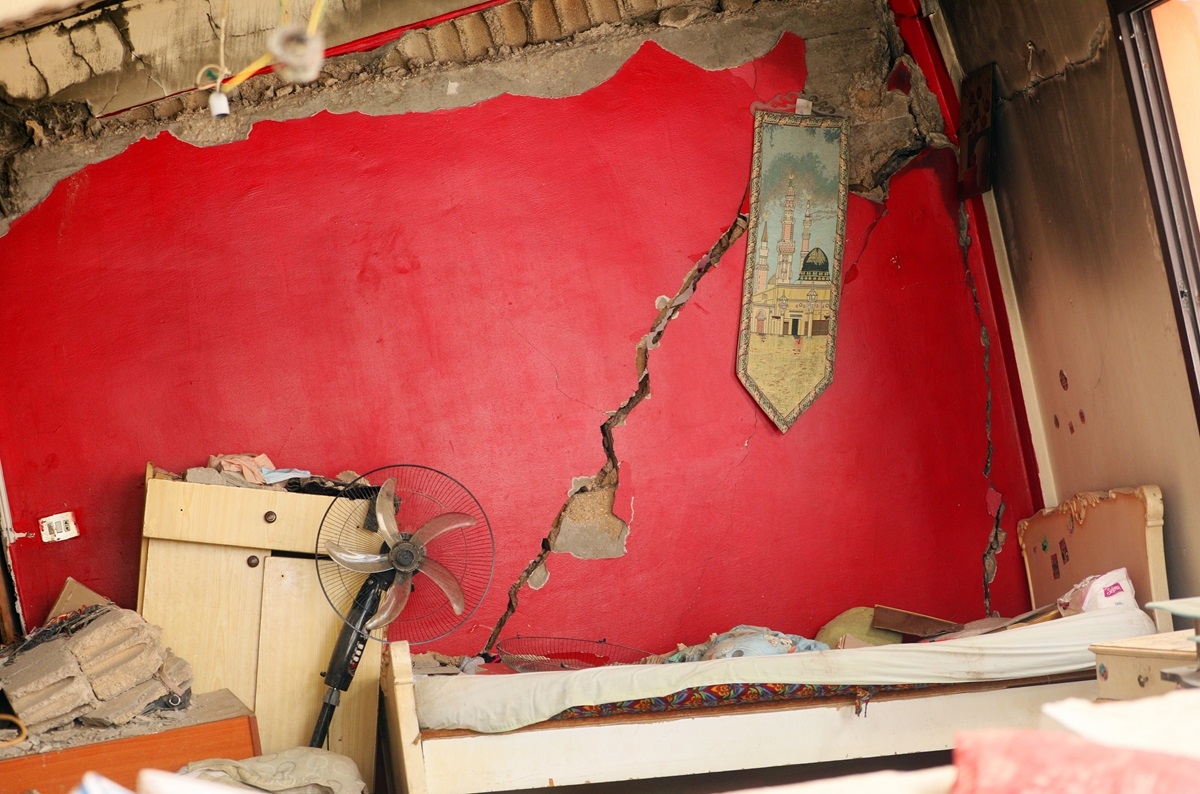
A home in Haret Hreik is left badly damaged by Israeli airstrikes that assassinated Hezbollah Secretary-General Hassan Nasrallah. Dahieh, Beirut. September 28, 2024. (Marwan Bou Haidar/The Public Source)
Mariam* was born in 1979. Until a year ago, she lived in Mays al-Jabal, a village in southern Lebanon, with her husband and three kids: her son is 16 and her daughters are 14 and 12 years old. The center of Mays al-Jabal is just over a kilometer (two thirds of a mile) from the Blue Line, the United Nations-designated line demarcating Lebanon from occupied Palestine. Since mid-October of last year, she and her family have relocated six times — most recently, on Wednesday, September 25, to Batloun, in the Chouf mountain range.
*Mariam spoke to The Public Source on the condition of anonymity, fearing repercussions or retaliation; her name has been changed. The interview was conducted in Arabic and its translation to English has been slightly edited for clarity and length.
Read her testimony in “We Drank Resilience From the Waters of the South.”
September 25, 2024 Jasbir Puar on the Pager Attacks and the Right to Maim Beirut
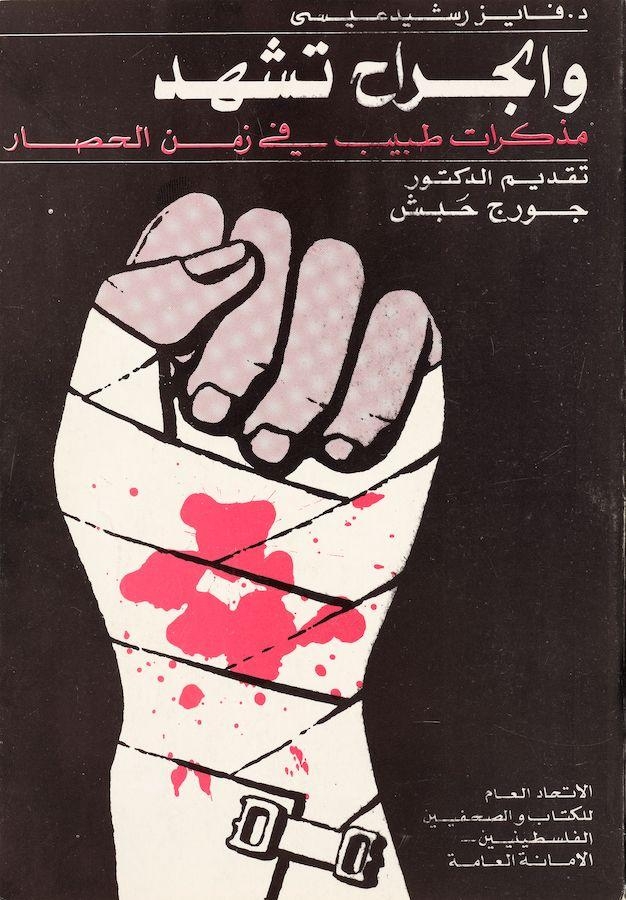
“And the Wounds Stand Witness”: A poster by the Palestine Poster Project that reads: “Dr. Faiz Rashid Issa. And the wounds are witness. Memories of a doctor in the early days of the siege. Foreword by Dr. George Habash. General Union of Palestinian Writers and Journalists. General Secretariat.” Art by Marc Rudin/Jihad Mansour (1983).
After last week’s pager and two-way radio attacks, as people in Lebanon wondered whether it was safe to even call their loved ones, pro-Israel social media accounts erupted with a celebration of maiming: grisly jokes and memes gloated over severed limbs, exploding phones, and supposedly neutered men. To put the pager attacks in the context of Israel’s ongoing practice of maiming, The Public Source reached out to Jasbir K. Puar, a professor of Global Race Studies at the University of British Columbia and author of the award-winning book “The Right To Maim: Debility, Capacity, Disability.”
We wanted to hear her thoughts on the pager and radio attacks, in which thousands of people lost hands and eyes in a split second. How might these attacks complicate the typical framing of liberal humanitarianism, which presents such attacks as more “humane” than outright killing? How does this new spectacle of horror fit into Israel’s “humane” image, which has long been central to its justification for the right to maim?
Read Puar’s response in Jasbir Puar on The Pager Attacks and the Right to Maim
September 23, 2024 Lebanon Witnesses Deadliest Day in Decades Lebanon
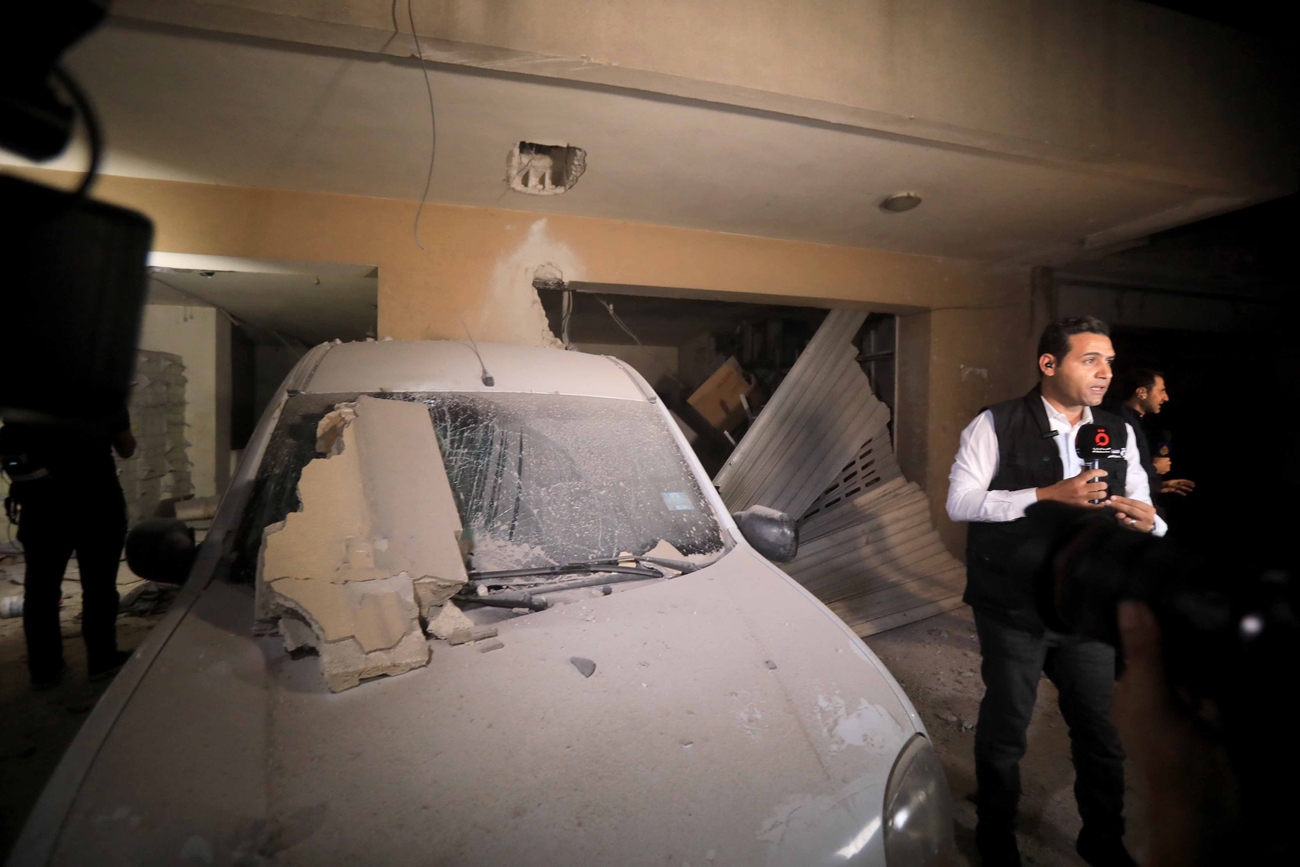
A journalist stands amid the wreckage left behind by an Israeli strike in Dahieh, Beriut's southern suburbs on September 23, 2024. (Marwan Bou Haidar/The Public Source)
With the sun barely rising, Israel began its heaviest bombardment campaign to date on more than 1,600 locations in the South, Nabatieh, Beqaa, and Baalbek-Hermel governorates, indiscriminately striking homes, urban squares, and countryside. In the evening, Israel carried out a strike in Dahieh, Beirut’s southern suburbs, reportedly targeting Hezbollah commander Ali Karaki. In under 24 hours, Israel killed 558 people and injured 1,835, according to the Public Health Ministry. It was, according to the New York Times, “one of the most intense air raids in contemporary warfare.”
In response, Hezbollah launched dozens of rockets towards Haifa, striking the Ramat David base and weapons manufacturer Rafael Advanced Defense Systems, which were hit the day before. It also struck the Ein Zeitim base of the Israeli Northern Corps with dozens of rockets.
On the deadliest day in decades, families fled towards Beirut to escape with their lives, mattresses stacked on the roofs of their cars, carrying whatever belongings they could rescue. Thousands were trapped in hours-long traffic jams along the congested highways from the South to the capital.
By the end of day, hundreds of thousands were displaced. Many had no time to pack when the killing spree began, and all they took with them were the clothes on their backs, wallets, and whatever small comforts they could grab.
September 23, 2024 Commentary on Israel’s Indiscriminate Attacks and Forced Displacement in Lebanon Beirut
Excerpt from an interview with Democracy Now! on Israel’s aggressive airstrikes across Lebanon and the forced displacement of hundreds of thousands:
“If the question is, ‘Where is Israel attacking right now?’ It's been fairly indiscriminate. We've seen that cities and towns, including the heart of Nabatieh was bombed; Ghazieh, next to Saida, also the square was bombed. So we're talking about attacks that are happening in the thick of the towns — densely populated areas, not just in disparate places. And you know, at the heart of this is an attempt to manufacture consent and try to portray most Southernees as Hezbollah operatives; their homes as essentially depots and caches.”
Watch the full interview on Democracy Now!, Israel Bombs Lebanon After Blowing Up Pagers in "Act of Mass Mutilation." Is Ground Invasion Next?
September 22, 2024 The Moving Funeral of Radwan Commander Ibrahim Aqil Dahiyeh
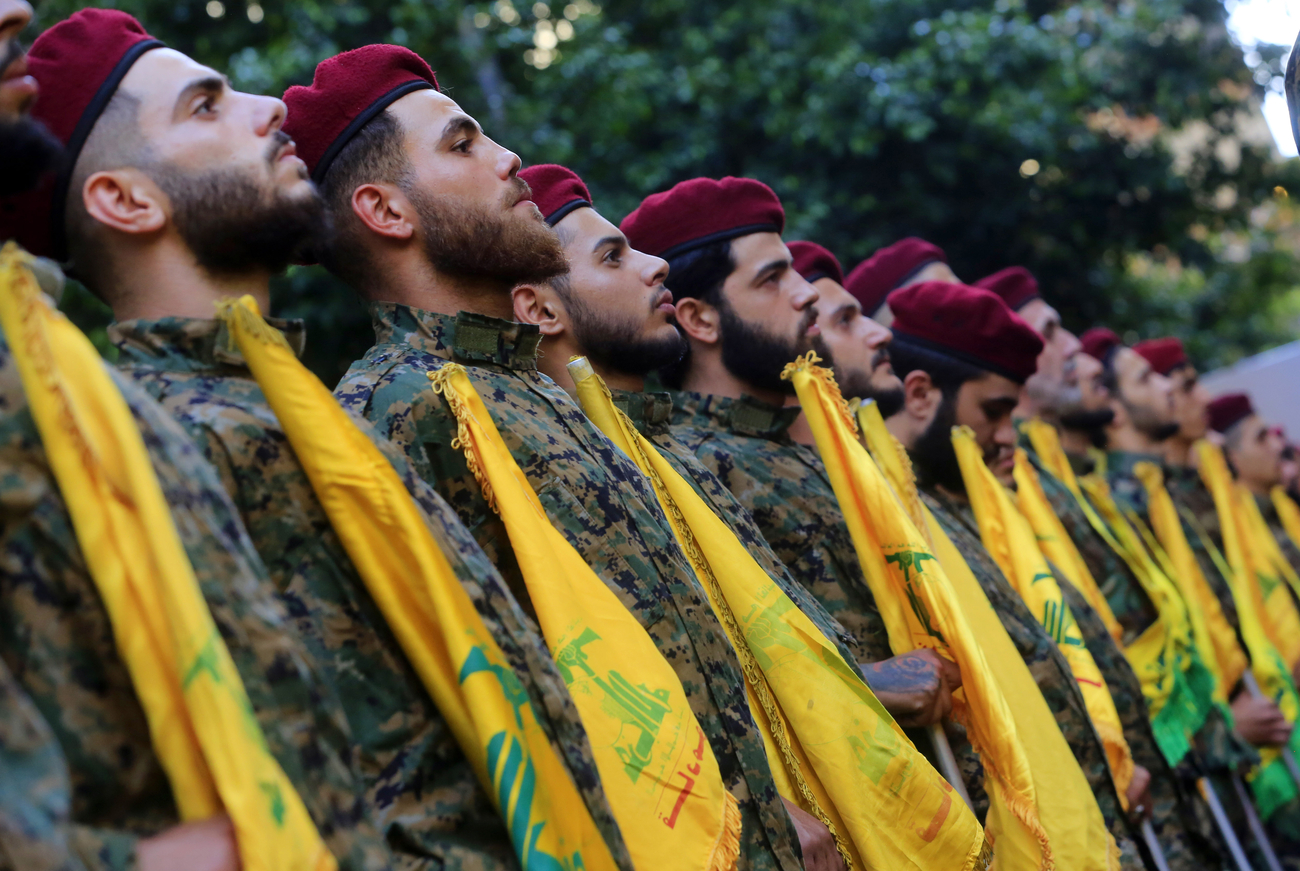
Hezbollah fighters stand at attention at the funeral of Radwan Force commander Ibrahim Aqil on Sunday, September 22, 2024 in Beirut's southern suburbs. (Marwan Bou Haidar/The Public Source)
Fists of resolve rise in the air and handfuls of rice fall on the coffin. Under the banner, “we will not abandon Palestine,” mourners, in their hundreds, if not thousands, assemble for the funeral of senior Radwan Force commander Ibrahim Aqil, on Sunday, September 22, 2024 in Dahiyeh, Beirut’s southern suburb.
The martyr had been part of the resistance since its founding in the wake of the Israeli invasion of Lebanon in 1982. Through the ‘80s and ‘90s, Aqil was a field commander in the struggle to liberate the South, and in 2006, he lent his long experience to foil Israel’s attempt to re-invade and occupy. Decades of his life were dedicated to training fighters and ensuring readiness and continuity for the resistance. In 2006, he formed Hezbollah’s elite unit, the Radwan Force, which he led until his martyrdom. On September 20, Israel assassinated him for honoring a principled, military commitment to the resistance in Gaza and the liberation of Palestine.
In the same attack that afternoon, Israel killed at least 31 people and injured 68, according to the Public Health Ministry. An F-35 struck two apartment buildings as families gathered for lunch or returned home from work or school.
View more images in this photo blog by Marwan Bou Haidar.
September 22, 2024 “Affirmations of Life” Confront Israel’s “Right to Kill” Beirut
As the Zionist state and its supporters employ maiming and killing as their primary tactics, people in Lebanon have risen up more than ever in defiance of these tactics. Palestinian nurses in Lebanon are offering free healthcare to people injured in the two massacres. Palestinians and Lebanese are donating blood. Some were so affected by the brutality of the attack that they were ready to donate one of their eyes or kidneys to the wounded; one person wrote on Facebook that he was looking to donate “to console those who have lost their eyes, to fulfill some of what is owed to those who sacrificed for us.” A campaign of people offering their organs swept social media and inundated the head of the Association for Organ Donations with calls to fill out organ donation forms.
Read more in researcher Nisrine Chaer’s “Affirmations of Life” Confront Israel’s “Right to Kill”
September 19, 2024 Report on Israel’s Deadly Twin Terror Attacks Beirut
Excerpt from an interview with Democracy Now! on the wave of explosions in electronic devices booby-trapped by Israel:
The events of the past two days have caused a lot of panic, a lot of fear, and, to a large extent, paranoia, which was aided by a disinformation campaign, to a large extent. Over the past couple of days, or at least yesterday, for the most part, people were receiving messages over different WhatsApp groups, on social media platforms, that any and every electronic device can be detonated by the Israelis. So people were scared of using their cellphones. People were hearing that even kitchen appliances were exploding, solar panels, laptops and so on. Thankfully, for the most part, this turned out to be a disinformation campaign, and it did not really— was not really materializing on the ground as was being reported across different channels. That may be the only solace from the events of the past couple of days, where we saw civilian areas and civilians being targeted.
This has been widely reported in the Western press as a sophisticated campaign that targeted alleged Hezbollah operatives, but the reality is that, for the most part, these explosions were occurring in civilian areas, in vegetable markets and in the supermarket and the funeral, as you mentioned. And that’s on one hand, but also, on the other, not everybody who’s carrying these pagers and these walkie-talkies is a Hezbollah fighter, nor were any of them on the combat field or on the frontlines in the southern part of the country. It’s very important to note that Hezbollah is not just a resistance group or a militant group. Hezbollah is also a political party here in Lebanon that is represented in Parliament. And Hezbollah also runs and operates several large civil institutions. So, we saw medical personnel and healthcare workers being killed and injured and maimed by these explosions. We saw children. We saw even the Iranian diplomat. So this was a indiscriminate attack that made the Lebanese population feel that anyone can be targeted, at any point, anywhere in the country.
Watch the full interview on Democracy Now!, Lebanon: 37 Dead, 3,400+ Injured in Wave of Explosions in Electronic Devices Booby-Trapped by Israel

